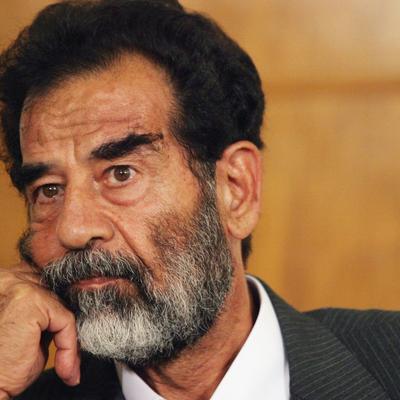Saddam Hussein at a Glance
- Categories: Politicians, Politicians > Presidents
- Net Worth: $2 Billion
- Birthdate: Apr 28, 1937 - Dec 30, 2006 (69 years old)
- Birthplace: Al-Awja
- Gender: Male
- Profession: Writer, Politician, Party leader
- Nationality: Iraq
- Height: 6 ft 1 in (1.861 m)
Saddam Hussein’s Net Worth: A Deep Dive into His Wealth, Power, and Legacy
Introduction: The Enigma of Saddam Hussein’s Wealth
Saddam Hussein, the former President of Iraq, remains a controversial figure whose name evokes strong emotions. Beyond the political landscape and brutal tactics that defined his reign, a significant aspect of his legacy involves the accumulation and alleged misuse of immense wealth. This article explores the complex question: What was Saddam Hussein’s net worth? We delve into the estimations of his fortune, the sources of his wealth, and the controversies surrounding his financial holdings.
Early Life and Rise to Power
Born Saddam Hussein Abd al-Majid al-Tikriti on April 28, 1937, in Al-Awja, Iraq, Saddam’s early life was marked by hardship. After a difficult childhood, marked by the early loss of his father and brother, and a challenging relationship with his stepfather, Saddam found refuge and mentorship with his uncle, Khairallah Talfah, in Baghdad. This exposure instilled in him nationalist and pan-Arabist ideologies. He joined the Ba’ath Party in 1957, a key turning point that shaped his future involvement in Iraqi politics.
His political activities led to imprisonment and exile, but his determination never faltered. In 1968, the Ba’ath Party seized power in a coup, and Saddam rose through the ranks. He became the de facto leader, and by 1979, he formally assumed the presidency, effectively becoming the absolute ruler of Iraq. His tenure was marked by ruthless suppression of dissent and an iron grip on power.
The Peak of Power and Estimated Net Worth
At the height of his power, Saddam Hussein’s estimated net worth reached staggering figures. Although precise numbers are difficult to ascertain due to the clandestine nature of his financial dealings, estimates suggest a peak net worth of around $2 billion. It’s important to note that this is a speculative figure, however, because there is no definite data. This wealth was accumulated through various means, including:
- Oil Revenues: Iraq’s vast oil reserves were a primary source of income. Saddam controlled the nation’s oil industry and diverted significant portions of the revenue for his personal and political use.
- Black Market Sales: During periods of international sanctions, Saddam engaged in illicit oil sales to bypass restrictions and generate substantial cash.
- Corruption and Extortion: Corruption was rampant, with Saddam and his inner circle reportedly extracting wealth from businesses, government contracts, and other sources.
- Asset Accumulation: Saddam invested in real estate, luxury goods, and other assets both within Iraq and abroad, further increasing his wealth.
His wealth enabled him to build opulent palaces, fund his military endeavors, and maintain his lavish lifestyle, all while the Iraqi people suffered under his authoritarian rule.
Billions in Looted Cash and Missing Money
The period leading up to and following the 2003 U.S.-led invasion of Iraq revealed the extent of Saddam’s hidden wealth. In the chaos surrounding the invasion, billions of dollars in cash were discovered, much of it looted from the Central Bank of Iraq. The most notable findings included:
- Central Bank Looting: Just before the invasion, over $1 billion was removed from the Central Bank, with $900 million in USD and $100 million in Euros. The operation was ordered by Saddam’s son, Qusay Hussein. This money was found stashed in various locations, including Saddam’s palaces.
- Uday Hussein’s Stash: Another $650 million was discovered behind a false wall in the former palace of Uday Hussein. This was a separate stash of money.
- Misappropriation by US Troops: Sadly, some of the recovered cash was stolen by U.S. soldiers. Numerous soldiers were charged with stealing Saddam’s money, with some making large bank deposits in the United States.
Even more concerning was the alleged transfer of billions of dollars into foreign accounts before the fall of Baghdad. These funds were reportedly moved to accounts primarily in Switzerland, often overseen by Saddam’s half-brother, Barzan Ibrahim al-Tikriti, who served as the Iraqi ambassador to the United Nations and was based in Geneva.
The Fate of the Palaces
During his reign, Saddam Hussein ordered the construction of an estimated 80 to 100 palaces throughout Iraq. These lavish residences were symbols of his power and wealth. They were used to house his family, mistresses, friends, and party officials. The palaces showcased extravagant decorations, including marble and gold, as documented in UN documents.
After the U.S. invasion, the fate of these palaces varied. Some were occupied by the U.S. military, while others were seized by the Iraqi government. The palaces remain a physical manifestation of Saddam’s legacy, representing both his immense wealth and the misuse of state resources.

(Photo by Pool-Getty Images)
Uday Hussein’s Extravagant Car Collection
Saddam Hussein’s son, Uday Hussein, shared his father’s taste for opulence, particularly luxury automobiles. Uday amassed a collection of high-end cars, reportedly owning over 1,000 vehicles. Many of his cars were destroyed during a raid on his compound by the U.S. Army in 2003, but those that survived were auctioned off.
The collection included rare and expensive cars, such as:
- Ferrari F40
- Porsche 911
- BMW Z1
- Rolls Royces
- Plymouth Prowler
- Ferrari 550 Maranello
- Porsche 928
- Lamborghini LM002 SUV
- Pink Testarossa
- Excalibur Phaeton roadsters

AHMAD AL-RUBAYE/AFP/Getty Images

AFP/Getty Images
Capture, Trial, and Execution
Saddam Hussein’s capture on December 13, 2003, marked the end of his reign. He was found hiding in a hole near an ad-Dawr farmhouse during Operation Red Dawn. His subsequent trial, conducted under the Iraqi interim government, led to his conviction on November 5, 2006, for crimes related to the 1982 killing of 148 Iraqi Shi’ites. He was sentenced to death by hanging and was executed on December 30, 2006.
Personal Life and Family
Saddam Hussein’s personal life was as complex as his political career. He married his cousin, Sajida Talfah, and they had two sons, Uday and Qusay, and three daughters, Raghad, Rana, and Hala. While married to Sajida, he also took other wives, including Samira Shahbandar, which caused much controversy. Uday was initially seen as Saddam’s likely successor, but Qusay later became the favorite due to Uday’s erratic behavior.
Conclusion: The Enduring Legacy of Saddam Hussein’s Wealth and Power
Saddam Hussein’s net worth and the circumstances surrounding it provide a crucial window into his rule. His accumulation of wealth was inextricably linked to his authoritarian control, the exploitation of Iraq’s resources, and the suffering of its people. The billions of dollars in looted and missing funds, his lavish lifestyle, and the extravagant possessions of his family highlight a story of power, greed, and corruption. Although exact figures remain elusive, Saddam Hussein’s financial legacy serves as a potent reminder of the costs of tyranny.

